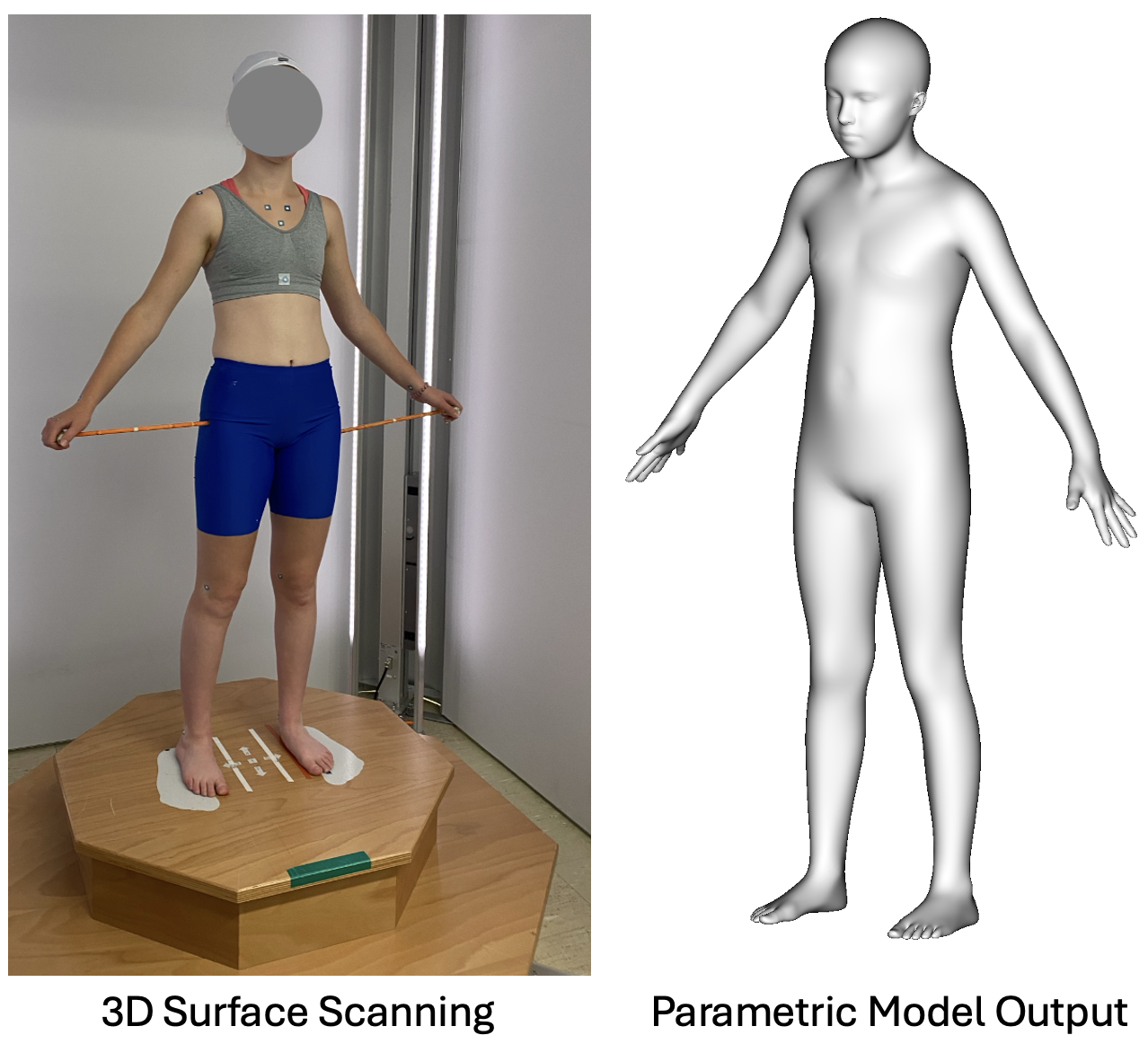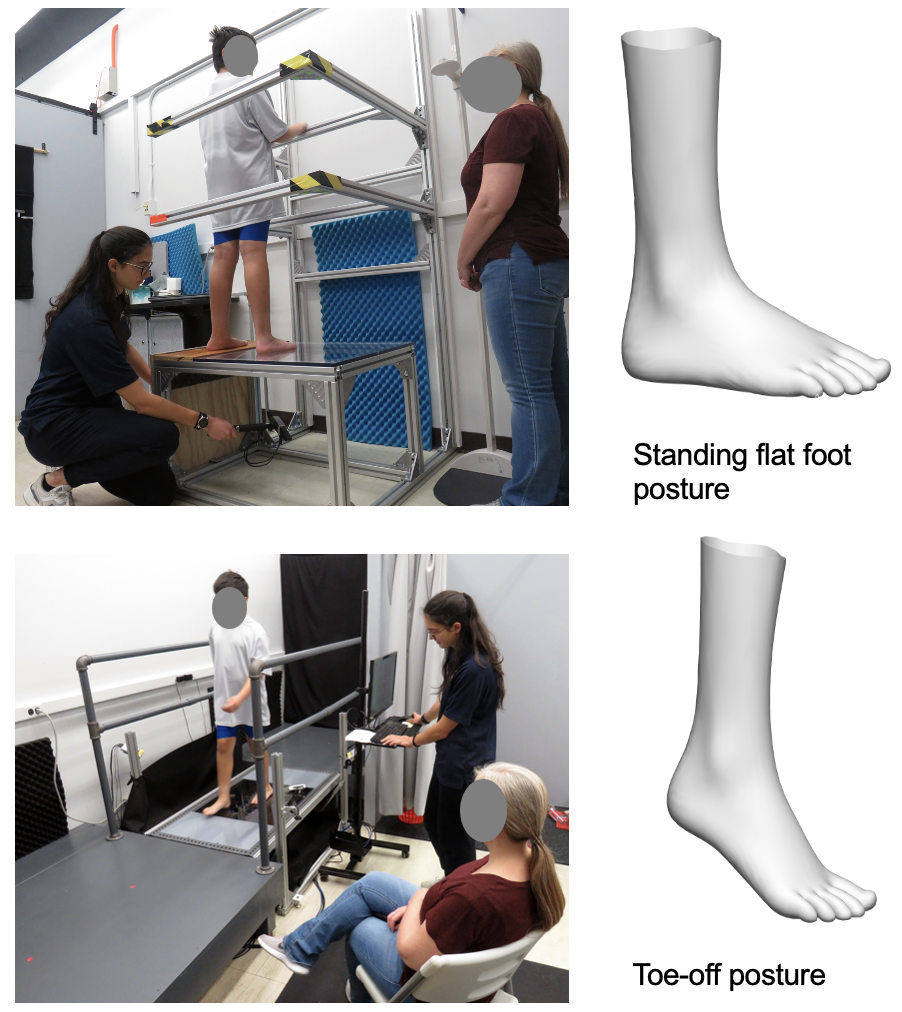Using YouthShape Outcomes
We are working with industry and academic partners on a range of applications. Some of the applications of the data are listed below. If you have ideas for a collaboration or case study, please contact us.

Clothing and Protective Equipment
Data: body dimensions, body shape
The YouthShape dataset integrates manual one-dimensional measurements with 3D whole-body surface scans. The data demonstrate the broad range of body size across age, sex, and race/ethnicity. The important effects of increasing body mass on body size and shape are evident in the data.
View Outcomes
Safety Helmet Design
Data: head shape, head dimensions
The YouthShape dataset includes detailed 3D head scan data that provide valuable guidance for the design of sports helmets that fit children better. The scalar data browser provides access to traditional measures of head length, breadth, and circumference that can be stratified by age and sex.
View Outcomes
Footwear
Data: foot shape, foot kinematics
The YouthShape study produced the first ever parametric model of U.S. children's feet. We found a strong effect of BMI on foot shape, demonstrating that the shoe lasts used for previous generations are no longer appropriate. We also have developed the first-ever 3D model of children's feet in motion, documenting in detail the patterns of foot motion through a gait cycle.
View OutcomesPublications
YouthShape methods, outcomes, and applications
Laboratory Methods for a Pilot Study of the U.S. YouthShape Survey of Child and Youth Anthropometry and Physical Capability
In Proceedings of the Human Factors and Ergonomics Society Annual Meeting. Sage Publications, Los Angeles, CA.
Understanding the range of body sizes and shapes among children is critical for the design of products and systems to ensure safe and effective use and other safety considerations to reduce the risk of injury. The availability of useful data for youth is even more limited than for adults. To address this gap, methods were developed to gather detailed, integrated, three-dimensional (3D) data on anthropometry and to characterize the physical capability of children from ages 3 through 17 years. This paper provides an overview of the methods developed in a pilot study.
View Publication